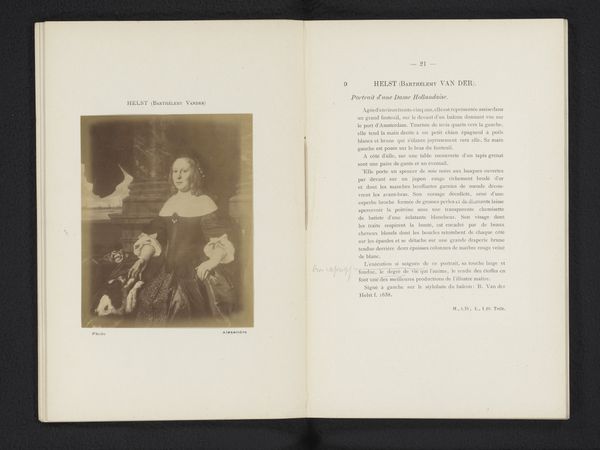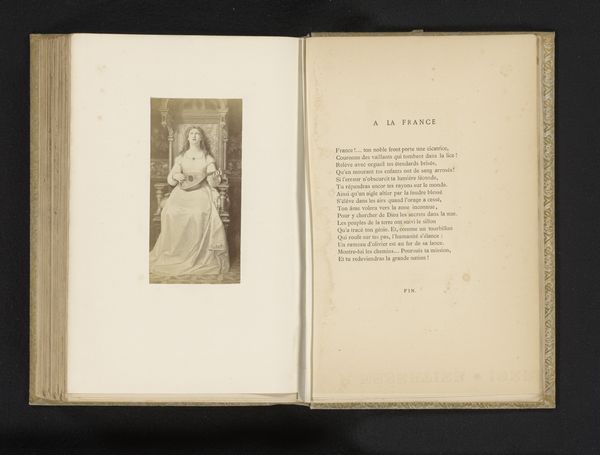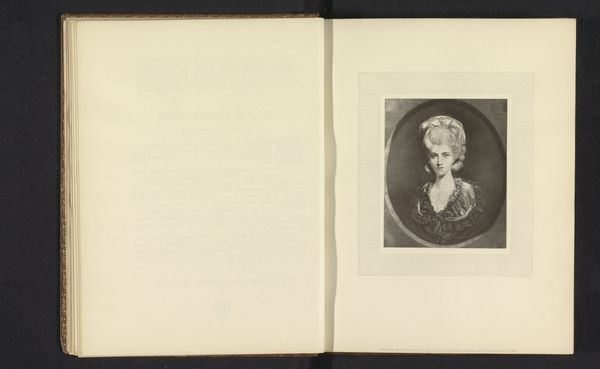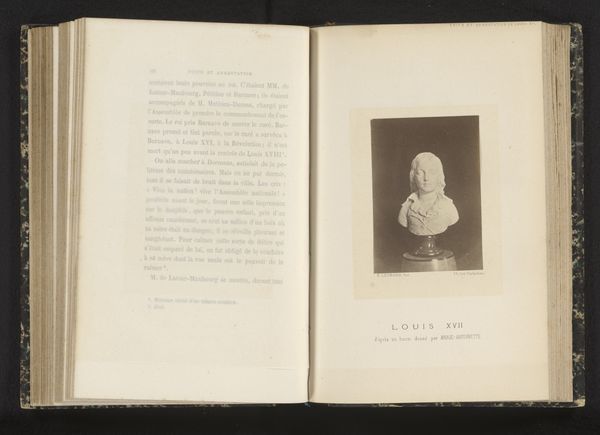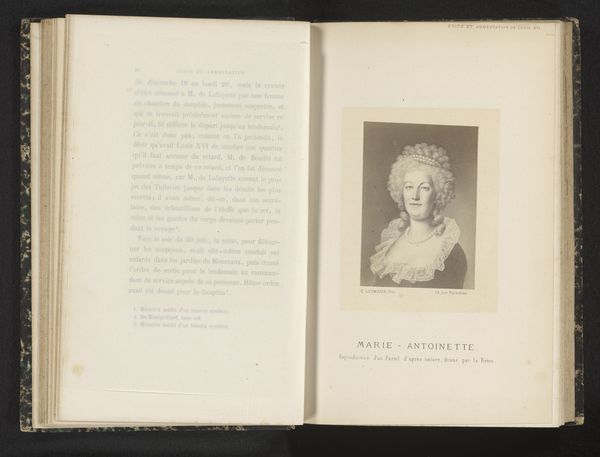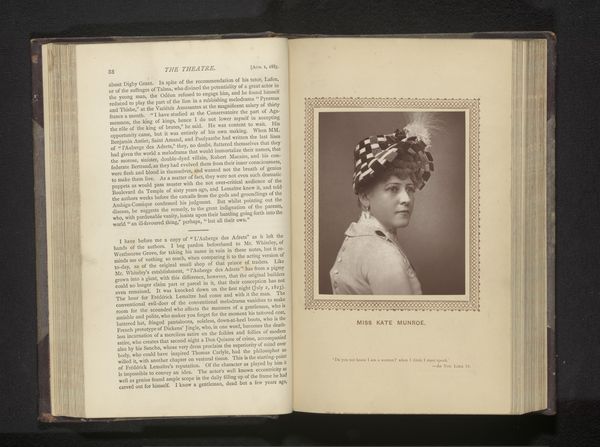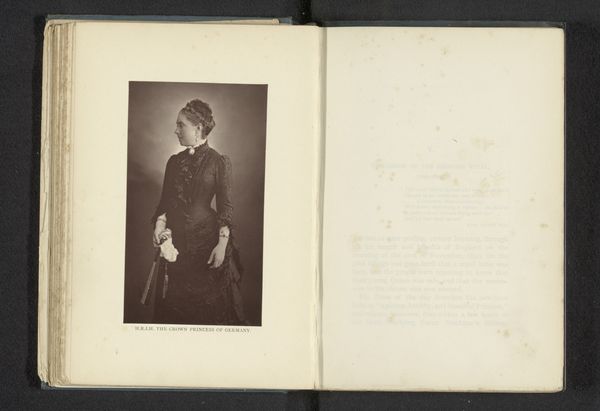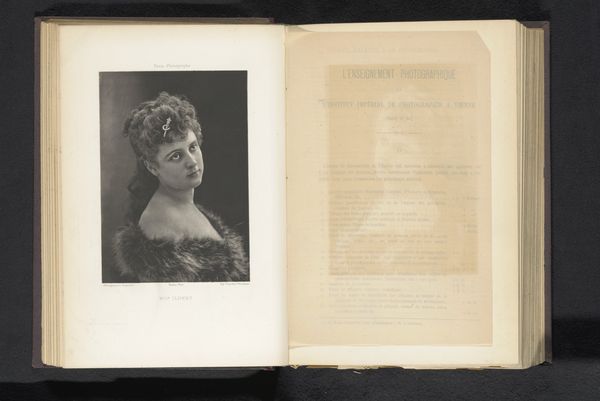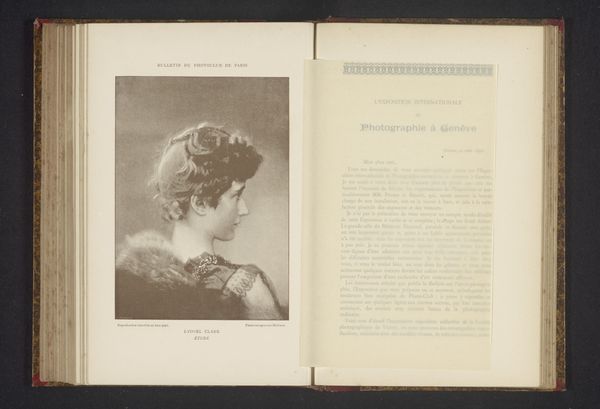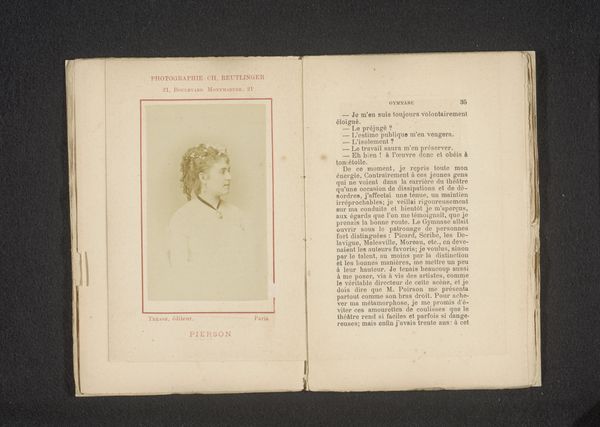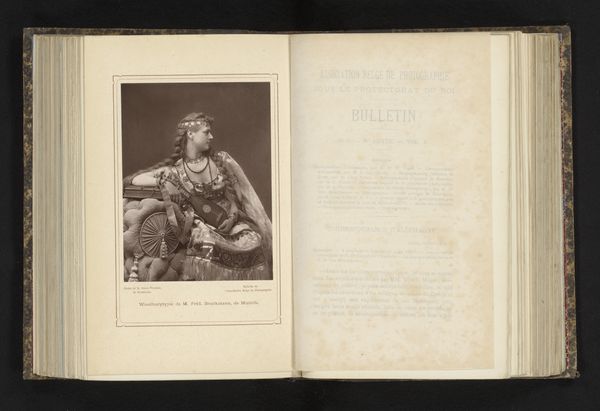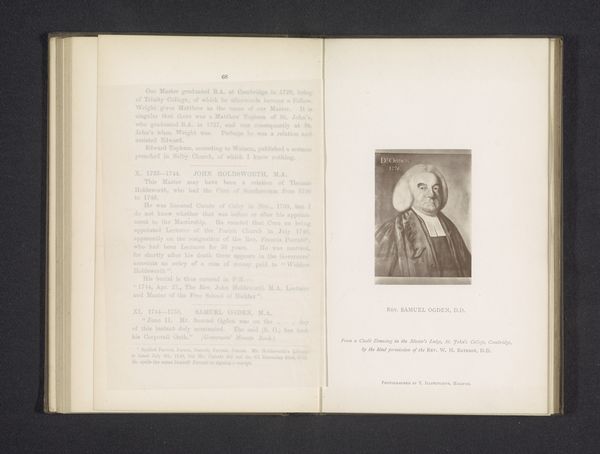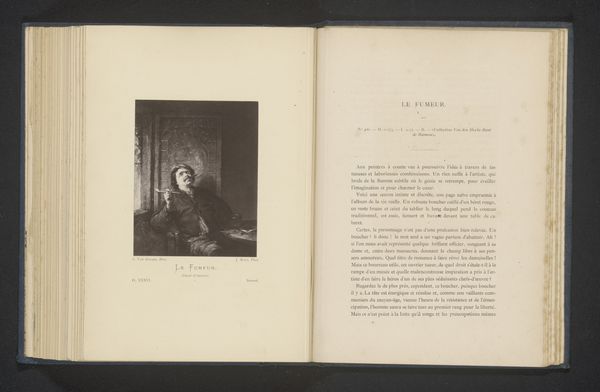
photography, sculpture
#
portrait
#
sand serif
#
aged paper
#
classical-realism
#
photography
#
fading type
#
sculpture
#
stylized text
#
thick font
#
handwritten font
#
golden font
#
classical type
#
letter paper
#
historical font
Dimensions: height 171 mm, width 121 mm
Copyright: Rijks Museum: Open Domain
Editor: So, this is a photograph of a sculpture titled "Buste van Willem Linnig," made before 1896. It seems to be part of a book showcasing the artist Alexandre van Antro's work. The portrait has a classical feel. How do you see this photograph and the choices the artist made? Curator: It's interesting to view this image within the context of its presentation. We're not just looking at a portrait of Willem Linnig, but a *representation* of a portrait, mediated by photography and its inclusion in a publication. What was the public role of such artistic publications during that period? Was it a means of documenting and celebrating artistic achievements, or perhaps promoting a specific cultural image? Editor: That's a good point. It does feel staged, almost like constructing an ideal of artistic genius. I'm also curious, why depict a sculpture rather than the person directly? Curator: Exactly! The choice to photograph a sculpture is revealing. Sculpture had a long-standing association with permanence, authority, and classical ideals. Photographing it flattens the original into two dimensions, however. This allows wider circulation, almost democratizing art, but perhaps also reducing the sculpture to another piece of visual imagery, vulnerable to the changing tastes and politics of imagery. Editor: That's fascinating. So it’s not just about preserving a likeness, but also about crafting a particular narrative around the artist and his subject through photography. Curator: Precisely. Consider the stylistic elements—the classical realism, the aged paper, even the stylized font—all contributing to a carefully constructed historical narrative. Editor: I never considered that choice, I was caught up on how striking the face in the sculpture was. I am definitely considering publication context now. Curator: And hopefully now we both see how every element – the sculpture itself, the photographic representation, the book format – contributes to the complex message being conveyed.
Comments
No comments
Be the first to comment and join the conversation on the ultimate creative platform.
